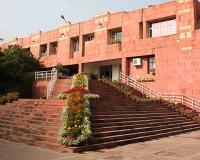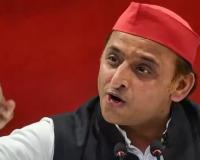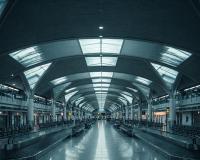India’s Big Infrastructure Problem: Empty Airports, Unfinished Highways, and Wasted Investments

Nitin Sindhu VY
Over the past decade, India has aggressively expanded its infrastructure—constructing new airports, highways, metro systems, and expressways at an unprecedented pace. The goal was clear: modernize transportation, reduce congestion in major cities, and stimulate economic growth. However, a troubling reality has emerged—many of these ambitious projects now stand underutilized, incomplete, or financially unsustainable.
Ghost Airports: Expensive Projects With No Passengers
Why Are These Airports Empty?
- Poor Location Choices: Many new airports were built in regions with low passenger demand, far from major economic hubs.
- Competition from Bigger Hubs: Despite efforts to decongest major airports like Delhi and Mumbai, passengers and airlines still prefer these well-connected hubs over smaller, remote alternatives.
- Lack of Supporting Infrastructure: Some airports lack proper road or rail connectivity, making them inconvenient for travelers.
A 2023 government audit found that may have been wasted on airports that serve no real demand. Experts argue that better feasibility studies and demand analysis could have prevented these losses.
Highway Dreams Stuck in Delays and Land Disputes
delays, land disputes, and contractor failures have left many key projects incomplete.
Key Bottlenecks in Highway Development
- Land Acquisition Issues: Farmers and landowners often protest against unfair compensation, leading to years-long legal battles.
- Contractor Failures: Many construction firms, especially smaller ones, lack the financial strength to complete projects on time. Some abandon projects midway, forcing the government to rebid them.
- Environmental Clearances: Highway projects passing through forests or eco-sensitive zones often get stuck in bureaucratic delays.
As a result, traffic congestion persists in major cities, and the economic benefits of these highways remain unrealized.
Metro Systems Running Empty: A Case of Over-Investment?
Metro rail networks have expanded rapidly in cities. However, ridership remains shockingly low in many of them.
Metro Systems Struggling with Low Demand
A 2024 government report admitted that some metro lines were "built too early", before population density and demand justified them.
Economic Slowdown: Is Infrastructure Waste a Factor?
India’s GDP growth has slowed to 6.1% (2023-24), down from previous highs of 8-9%. The stock market has also seen sharp declines, partly due to concerns over inefficient public spending.
Key Economic Concerns
- Mounting Debt: Many infrastructure projects rely on public funding, increasing fiscal strain.
- Low Returns on Investment: Empty airports and underused metros mean taxpayer money is not generating expected economic benefits.
- Private Sector Hesitation: Due to regulatory hurdles and payment delays, private companies are reluctant to invest in new projects.
Politics Over Planning: The Rush to Announce Projects
Infrastructure projects in India are often driven by political promises rather than economic logic.
- "Airport Every 200 km": One politician recently promised an airport every 200 km,
- "Metro for Every City": Some smaller cities with low population density are getting metro projects, even when buses or suburban trains would suffice.
Such announcements are more about winning elections than sustainable development.
The Way Forward: Smarter Planning, Better Execution
To prevent further wastage, India must:
1. Conduct Rigorous Feasibility Studies – Before approving projects, assess real demand, economic viability, and environmental impact.
2. Complete Ongoing Projects First – Focus on delayed highways and metros before launching new ones.
3. Public-Private Partnerships (PPP) – Involve private players for better efficiency and funding.
4. Improve Multi-Modal Connectivity – Ensure airports and metros are well-linked with roads, buses, and railways.
5. Avoid Political Gimmicks – Stop populist announcements and focus on projects that truly benefit the economy.
Conclusion: Build Smart, Not Just Big
India’s infrastructure push is commendable, but poor planning and wasteful spending threaten its success. Instead of chasing numbers—more airports, longer highways, bigger metros—the focus should shift to sustainable, demand-driven projects. Otherwise, the country risks ending up with more ghost airports, deserted metros, and half-built highways—while the real infrastructure needs remain unmet.
About The Author







.jpeg)


.jpeg)

